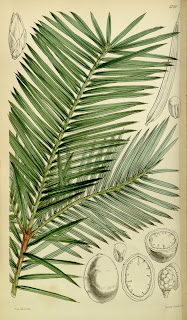Peterson PM, Romaschenko K, Soreng RJ, Reyna JV (2019) A key
to the North American genera of Stipeae (Poaceae, Pooideae) with descriptions
and taxonomic names for species of Eriocoma, Neotrinia, Oloptum, and five new genera:
Barkworthia, ×Eriosella, Pseudoeriocoma, Ptilagrostiella, and Thorneochloa.
PhytoKeys 126: 89–125.
https://doi. org/10.3897/phytokeys.126.34096
California has by my count 42 taxa of needlegrasses: the
Tribe Stipeae Dumort. In the Jepson
Manual, a broad (and overly simplified) generic concept was used: a single
genus Stipa L. Robustly supported phylogenetic
and biogeographic data now indicates that a number of lineages qualify as
genera, based on globally coherent viewpoint (yes, in Jepson-ease its so easy
to just blurt out Stipa! and remain in ignorance). Botanists struggle with the concept of a
genus, and are, when confused, inclined to combine lineages and they don’t know
when to stop. This results inappropriate
and ill-informative treatments: one could recognize only Triticum L. for all
species within the Triticeae, the cereal grasses, decidedly poor science, and a
setback for bread baking!
Our generic
lineup thus becomes (new named genera are bold italics):
Amelichloa
Ampelodesmos
Barkworthia
Eriocoma
Hesperostipa
Jarava
Nassella
Oloptum
Oryzopsis
Pappostipa
Piptatherum
Piptochaetium
Ptilagrostiella
Stipellula
Thorneochloa
The
California roster: Format New Name STATUS
Amelichloa
brachychaeta (Godr.) Arriaga & Barkworth Native
Amelichloa
caudata (Trin.) Arriaga & Barkworth Waif
Amelichloa
clandestina (Hack.) Arriaga & Barkworth Waif
Ampelodesmos
mauritanica (Poir.) T. Durand & Schinz, Naturalized
Barkworthia
stillmanii (Bol.) Romasch., P.M. Peterson & Soreng Native
Eriocoma
arida (M.E. Jones) Romasch. Native
Eriocoma
bloomeri (Bol.) Romasch. Native
Eriocoma
coronata (Thurb.) Romasch. Native
Eriocoma
hymenoides (Roem. & Schult.) Rydb. Native
Eriocoma
latiglumis (Swallen) Romasch. Native
Eriocoma
lemmonii (Vasey) Romasch. Native
Eriocoma
lemmonii subsp. pubescens (Crampton) Romasch. Native
Eriocoma
lettermanii (Vasey) Romasch. Native
Eriocoma
nelsonii (Scribn.) Romasch. subsp. dorei (Barkworth & J. Maze) Romasch. Native
Eriocoma
nevadensis (B.L. Johnson) Romasch. Native
Eriocoma
occidentalis (Thurb. ex S. Watson)
Romasch. subsp. californica (Merr. & Burtt Davy) Romasch. Native
Eriocoma
occidentalis (Thurb. ex S. Watson) Romasch. ssp. occidentalis Native
Eriocoma
occidentalis (Thurb. ex S. Watson) Romasch. subsp. pubescens (Vasey) Romasch., Native
Eriocoma
parishii (Vasey) Romasch. Native
Eriocoma
pinetorum (M.E. Jones) Romasch. Native
Eriocoma
thurberiana (Piper) Romasch. Native
Eriocoma
webberi Thurb. Native
Hesperostipa
comata (Trin. & Rupr.) Barkworth subsp. comata Native
Hesperostipa
comata subsp. intermedia (Scribn. & Tweedy) Barkworth Native
Jarava
plumosa (Spreng.) S.W.L. Jacobs & J. Everett Waif
Nassella
cernua (Stebb. & Löve) Barkworth Native
Nassella
formicara (Del.) Barkworth Native
Nassella
lepida (A. Hitchc.) Barkworth Native
Nassella
manicata (E. Desv.) Barkworth Naturalized
Nassella
pulchra (A. Hitchc.) Barkworth Native
Nassella
tenuissima (Trin.) Barkworth Waif
Nassella
viridula (Trin.) Barkworth Native
Oloptum
miliaceum (L.) Röser & H.R. Hamasha Naturalized
Oryzopsis
exigua Thurb. Native
Oryzopsis
micrantha (Trin. & Rupr.) Thurb. Native
Pappostipa
speciosa (Trin. & Rupr.) Romaschenko Native
Piptatherum
miliaceum (L.) Coss. Naturalized
Piptochaetium
setosum (Trin.) Arechav. Naturalized
Piptochaetium
stipoides (Trin. & Rupr.) Hack. ex Arechav. Naturalized
Ptilagrostiella
kingii (Bol.) Romasch. Native
Stipellula
capensis (Thunb.) Röser & H.R. Hamasha Naturalized
Thorneochloa
diegoensis (Swallen) Romasch. Native







